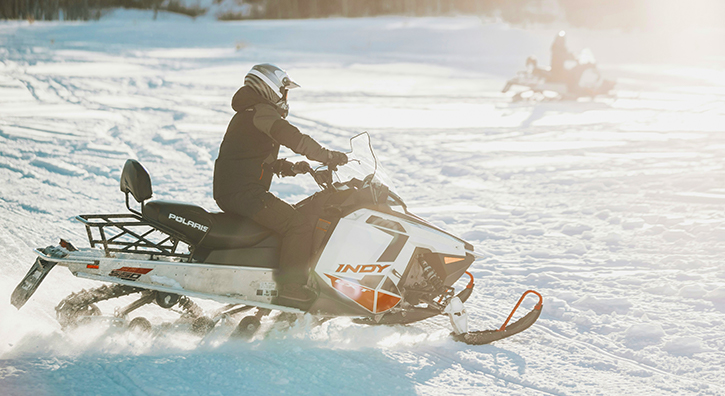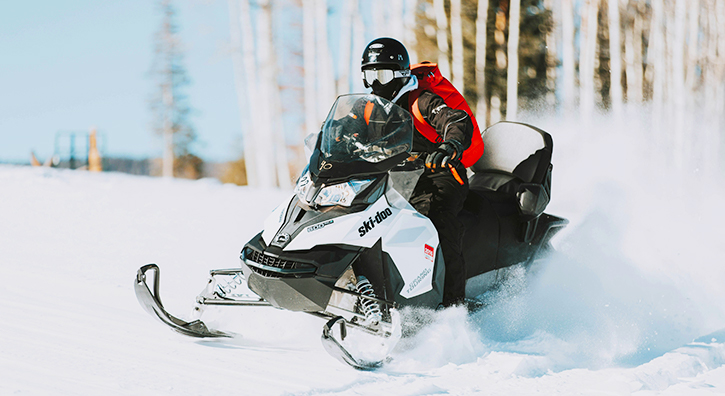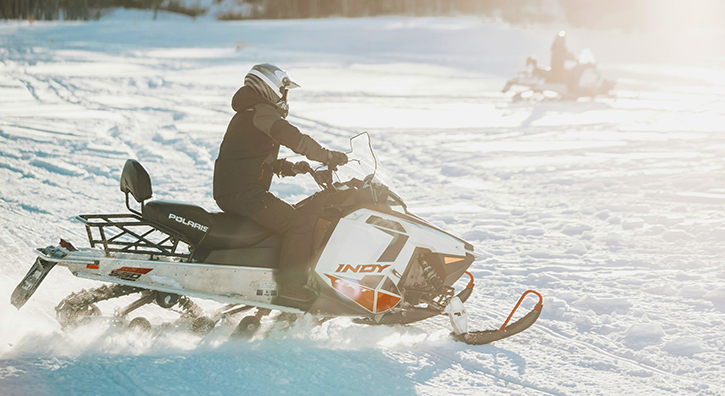0800 260 5082
Available from Available from Monday to Friday 9am to 5pm. Closed on weekends.
Available from Available from Monday to Friday 9am to 5pm. Closed on weekends.
Snow biking is an exciting and rapidly growing sport that combines the thrill of bike riding with the unique challenge of snowy terrain. Whether you're an experienced rider or a beginner, snowbike offers a fantastic way to explore winter landscapes on two wheels. Popular destinations like the Swiss Alps, Canada, and the U.S. offer a variety of tracks and routes that cater to all skill levels, ensuring everyone has the opportunity to enjoy this incredible winter adventure. From first-time riders experiencing the snowy track for the first time to seasoned snowbike enthusiasts pushing the limits, snow biking is a thrilling way to explore the outdoors during the colder months.
Whether you're looking to take a break from skiing or seeking a new challenge, snow biking provides an opportunity to face nature's elements with speed and agility. With the right preparation, gear, and guidance, snow biking transforms into an unforgettable adventure that keeps you riding all winter long. It's important to wear the appropriate gear to ensure comfort and safety while bike riding in the snow. The pressure of riding on snowy terrain can be intense, so it’s crucial to wear the right attire, such as insulated jackets and waterproof pants, to face the cold. Snow biking is a great way to combine the excitement of ski and bike into one action-packed winter sport.
Find out the best destinations for your ski holidays

Having the right gear is essential for a safe and successful snow biking experience. A fat tire bike, designed to tackle soft snow and challenging terrain, is the foundation of snow biking. These bikes are equipped with wide tires that provide the necessary traction to navigate snowy trails with ease. A solid helmet is crucial for protecting your head from any falls or obstacles on the snowy trail. Additional protective gear, such as knee and elbow pads, enhances your safety, especially on rougher terrain.
When snow biking, staying warm and dry is essential. Layering your clothing is the best way to adjust to fluctuating temperatures throughout the ride. Start with moisture-wicking base layers to keep sweat off your skin, followed by insulating mid-layers to trap heat. A waterproof outer layer is necessary to protect against snow, wind, and water, ensuring you stay comfortable on longer rides in snowy conditions.
Snow biking in remote areas can require additional safety equipment. A multi-tool, a spare tube, and a basic first-aid kit are essential for handling any unexpected issues during your ride. A GPS device or map app is crucial for navigating unfamiliar trails and preventing you from getting lost in the winter landscape. In some areas, guides and services are available to help riders stay safe while exploring challenging terrain.
Like traditional mountain biking, snow biking requires mastering the basics of bike handling, braking, and shifting. However, riding on snow presents its own set of challenges. The wider tires and softer surfaces require different techniques for maintaining control, particularly when climbing hills or descending fast trails. Starting on easier, packed snow trails will help you build confidence before tackling more technical routes.
Snow biking can take you across a variety of terrain types, from soft powdery snow to more compact, icy surfaces. Each trail presents its own challenges. For example, navigating snow that’s too deep requires more effort and balance, while riding on icy patches demands extra caution and control. Learning how to adjust your riding style based on the terrain will help you feel more confident and comfortable on any route.
Snow biking is a physically demanding activity, requiring strength, endurance, and mental resilience. Your legs and core will be heavily engaged as you pedal through soft snow, and your balance is key to maintaining control. Mental toughness is also essential, especially when facing unexpected conditions or challenging terrain. With practice and the right guidance, you’ll build the stamina needed to enjoy longer rides and tackle more advanced snow biking routes.


Selecting the right trail is crucial for a safe and enjoyable snow biking experience. Many winter sports parks and resorts offer dedicated snow biking routes, ranging from beginner-friendly loops to more advanced trails for experienced bikers. If you’re unfamiliar with the area, choosing a well-marked trail with varied terrain is a great way to ensure a fulfilling experience.
Booking a reputable snow biking guide can enhance your experience by providing expert knowledge on the terrain and offering tips on how to ride safely in snowy conditions. Guides can also provide necessary gear and help navigate unfamiliar trails, ensuring you get the most out of your snow biking adventure. Whether you’re a beginner or an experienced rider, a guide can elevate your trip by offering personalized coaching and a safer ride through winter landscapes.
Snow biking offers a unique way to experience winter landscapes, allowing you to explore snowy trails and terrain in a thrilling new way. Whether you're speeding down a trail or navigating challenging hills, snow biking offers an unparalleled sense of freedom and excitement. With the right gear, guidance, and preparation, you can transform your winter adventure into a journey full of breathtaking views and unforgettable moments.
So, as you plan your next winter getaway, make sure snow biking is on your list. Whether you're tackling your first ride or an experienced biker looking to explore new trails, snow biking is the perfect way to experience winter in a whole new way.